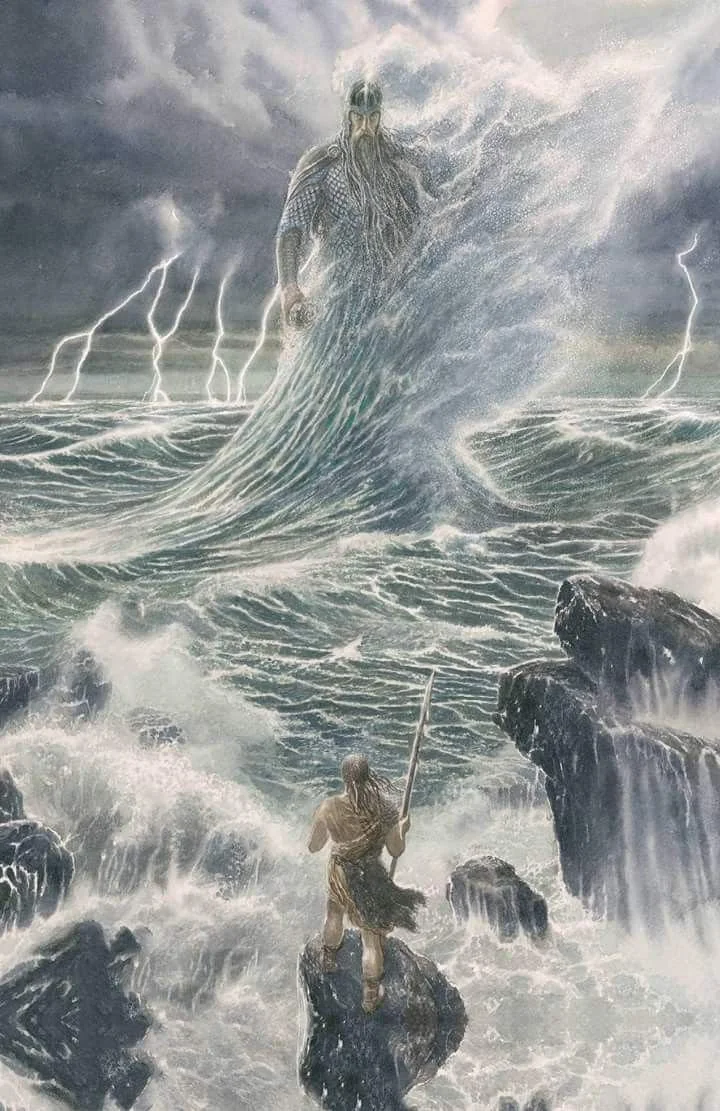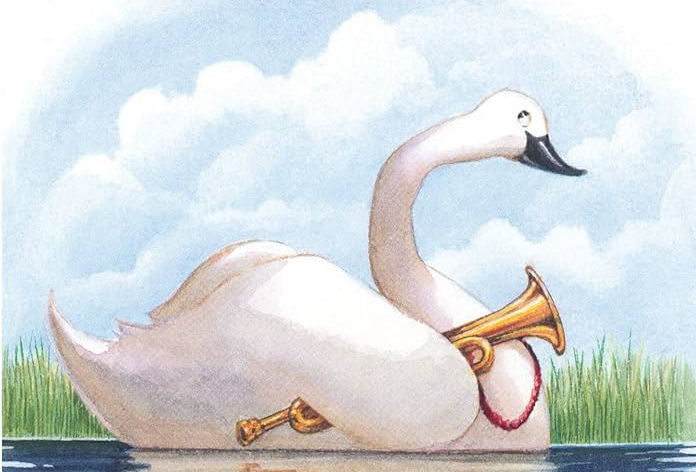The Fall of Gondolin
- Joe

- Nov 24, 2023
- 7 min read
For my birthday my wife gave me The Fall of Gondolin, a new-ish (2018) book credited to J.R.R. Tolkien but put together by his son Christopher. It tells a great tale of the First Age, long before The Lord of the Rings, and was one of the few stories that stuck with me from The Silmarillion years ago, so I was excited to read more about it.
Some advance explaining is needed. To start, when J.R.R died in 1973, his only published books were The Hobbit (1937) and The Lord of the Rings (1954-55). These works were based in a world of enormous depth developed by Tolkien since at least 1917 as a soldier during the war. Originally his legends had nothing to do with hobbits or rings. In the 1950s Tolkien was adamant the legends, by then referred to as 'The Silmarillion,' were inseparable and must be published with The Lord of the Rings. But between pressure from the publisher and the divergent state of the two (the Silmarillion was not ready), he relented with great sadness. The Silmarillion (1977) came out posthumously thanks to Christopher, who spent the rest of his own life shepherding his father's lifework. Publishing was difficult through this period considering a continued evolution of the stories, and this is part of what made reading this new book fascinating, but we'll have to come back to that.
Setting up The Fall of Gondolin requires a deep dive. From the beginning of time the Two Trees of Valinor illuminated Aman (the Blessed Realm, the continent with Valinor) while Middle-earth (another continent, then the realm of the dark lord Melkor) was dark. There was no sun. The First Age began, following the creation of the stars, with the Awakening of the Elves in Middle-earth. They were the immortal Firstborn and lived in twilight. Their appearance forced the Valar (gods who shaped and ruled the world) into action. They defeated Melkor, imprisoning him, and invited the Elves to come live with them. The vast majority of the young Elves took part in this Great Journey and came in three groups, the Vanyar, the Ñoldor and the Teleri. The Vanyar and the Ñoldor reached Valinor in haste but the Teleri fell behind. Of this third group some later crossed the sea and some remained in Middle-earth. It's an important distinction that some Elves lived in Valinor, and saw the light of the Two Trees, and some did not. Examples: Galadriel, of the Ñoldor, is one of the 'High Elves.' Legolas, a descendant of the Teleri that remained, is one of the 'Grey-elves.'

From here we'll mostly follow the Ñoldor, the second group. Their king was Finwë, and his eldest, a son named Fëanor, was both the most skilled and the most proud of all Elves. It was Fëanor who captured light from the Two Trees and created the Silmarils, three spectacular gems at the center of the rest of the First Age. After a great deal of time the Valar released Melkor, who'd falsely repented. Free in Valinor he sowed discord and was effective especially with Fëanor. When Melkor (now Morgoth) attacked, destroying the Two Trees and stealing the Silmarils (see my RoP compression of time post), he also killed Finwë, the Ñoldor king, before fleeing to Middle-earth. Fëanor was enraged and led a rebellion against the Valar, blaming them for what had happened, and swore an oath with his sons to retake the Silmarils by any means necessary. During their flight some of the Ñoldor killed other Elves (Teleri, ship-builders) in order to gain a fleet. This Kinslaying brought a great Doom on the Noldor who proceeded to leave, and they were barred from returning to Valinor.
So the exiled Ñoldor came to Middle-earth eager for glory and set for war. Much happened after that. The Sun and the Moon were created from the last flowers of the Two Trees and the first mortal Men appeared. Multiple Noldor kingdoms were established, joining the few realms of the Elves already there. But the more time passed the worse it got for the Elves, due to the power of Morgoth, his corruption of many tribes of Men and the oath of Fëanor, whose sons committed more evil in pursuit of the Silmarils. All this with the Doom cutting them off from Valinor. The biggest blow came at the Battle of Unnumbered Tears which destroyed the fighting power of the Elves and allowed Morgoth to dominate Middle-earth. Eventually the kingdom of Gondolin, a beautiful city hidden from Morgoth by the Encircling Mountains and protected by Eagles, was the last remaining refuge.
The Fall of Gondolin is actually the story of a Man, Tuor. In the published Silmarillion (the barebones version, <8 pages), the section called 'Of Tuor and the Fall of Gondolin,' we're told that Tuor was the son of Huor, slain at the Battle of Unnumbered Tears, and that he was a slave and later an outlaw. Ulmo, the Vala of the oceans, decided to use Tuor and put it into his heart to leave his home. Tuor took a tunnel, evading Morgoth's spies, made his way to Vinyamar, a long-empty Elvish kingdom, and found ancient armor. Ulmo then appeared out of the water before Tuor, instructed him to seek Gondolin and supplied him with an Elf guide. Tuor traveled to the hidden door and, after revealing himself, was taken to see Turgon, the Ñoldor king. In giving Ulmo's words, that Gondolin must be abandoned, the Elves stood in wonder. But Turgon still trusted his kingdom's strength and wouldn't heed the warning. Tuor stayed in Gondolin, married Turgon's daughter Idril and had a son named Eärendil. An Elf prince, Maeglin, jealous for Idril, was later captured and betrayed the city. Within a few years Morgoth brought an overwhelming force of Balrogs, Orcs and dragons. They destroyed the city and killed most of the Elves, including Turgon. A few led by Tuor and Idril, prepared for this moment, escaped with aid from the Eagles. The survivors made their way south to the location prescribed by Ulmo in his message to Turgon. There remnants of several former Elf kingdoms assembled.
There are a bunch of LotR connections in this story. Eärendil is born in Gondolin and escapes with Tuor. His later actions finally bring an end to Morgoth (and the First Age), he's the father of Elrond and Elros (the first king of Númenor), and his light aids Frodo in a time of need. Glorfindel is one of the Lords of Gondolin and one of its great heroes. Though he doesn't appear in the movies, Glorfindel (nor Arwen) is the one who rescues Frodo from the Nazgûl before they reach Rivendell. In the Hobbit, the party finds Elvish weapons after an encounter with trolls. These are Glamdring (taken by Gandalf), Orcrist (Thorin) and Sting (Bilbo), all forged in Gondolin. Glamdring was the sword of Turgon, the king, and it's always annoyed me it doesn't also glow in the movies when Orcs draw near. Lastly, Turgon's death results in Gil-galad becoming High King of the Ñoldor. He's the Elf leader during the Last Alliance of Elves and Men when Sauron is defeated the first time (and a character in the Rings of Power).
The Silmarillon version is fine but very short and written in simple language, as is everything in the published Silmarillion. The journey to Gondolin and the battle itself are a paragraph or less. And yet it was still memorable because it mentions two Elves (Ecthelion and Glorfindel) who single-handedly fought Balrogs. How great is that?
Here's where the new book comes in. The Fall of Gondolin is one of three (along with The Children of Húrin and Beren and Lúthien) going through the First Age 'Great Tales.' In them Christopher painstakingly assembled all versions of these stories from his fathers' old writings. The very first version of The Fall of Gondolin ('The Tale') comes from 1916 or 1917, and was the original story written in Tolkien's world. I liked this section (~74 pages, first published in The Book of Lost Tales pt2) the most. It's the only time Tolkien provides the full defense of the city and its fall. In this one Morgoth's force has a large number of Balrogs as well as 'drakes,' described as mechanical fire-breathing dragons. We hear of Rog and the House of the Hammer of Wrath charging the city gates and slaying many Balrogs ('a marvel and dread to the hosts of Melko, for ere that day never had any Balrogs been slain by the hand of Elves or Men'), but end up surrounded and killed to a man. We hear the full account of Tuor and Ecthelion of the Fountain fighting back to back and retreating to the square of the king, where Ecthelion, nearly dead, drives his helmet spike through Gothmog, taking the Lord of Balrogs with him. We hear of how Turgon's House, when all is lost, fights to the last and buys Tuor and a few others time to escape. These First Age heroes are awesome, and so powerful.
The Tale is eminently written as a legend, with what feels like old style and language. There are no chapter breaks, it just flows on and on. It's also clearly a first draft. Names and places are different in later versions. The story doesn't align with the map. Tuor's journey and lineage hasn't been sorted. There's even the surprise appearance of a character named Legolas Greenleaf, who presumably was invented here but would later only appear in LotR.
A key piece to understand here is that this story, and the others, changed over the decades as Tolkien figured out the interconnecting threads, fleshed out his world and attempted to finalize it all to his satisfaction. There are three more sources of some length showing the development of the Fall of Gondolin. The 'Sketch of the Mythology' (1926, ~5 pages) was the first outline of Tolkien's whole, well, mythology. The 'Quenta Noldorinwa' (1930, ~14 pages) was the only complete version of the Silmarillion completed during J.R.R.'s life and the primary text used to create the published version 40+ years later. This is where the major compression occurred. Finally, there was the so-called 'Final Version' (1951, ~55 pages, first published in Unfinished Tales), a later attempt to tell the full story. It's more in-depth than ever and clearly intended to be definitive, but the entire length is the hero leaving home, meeting Ulmo and making the difficult journey to and through the seven gates of Gondolin. He never even makes it to the city, much less sees its downfall. Christopher says 'For me it is perhaps the most grievous of his many abandonments.'
I sure would've liked to hear all of it too. But even though we won't, what we do have, thanks to Christopher, is still pretty enjoyable. Overall this book has reinvigorated my love for all things Tolkien, more so then it's been in 20 years. I'm excited to read the other two Great Tales and I've started the Hobbit with our five-year-old too. This isn't probably for casual fans though.
If you made it to the end, and understood any of this, props to you.









And you thought the nba in season tournament was confusing 😜